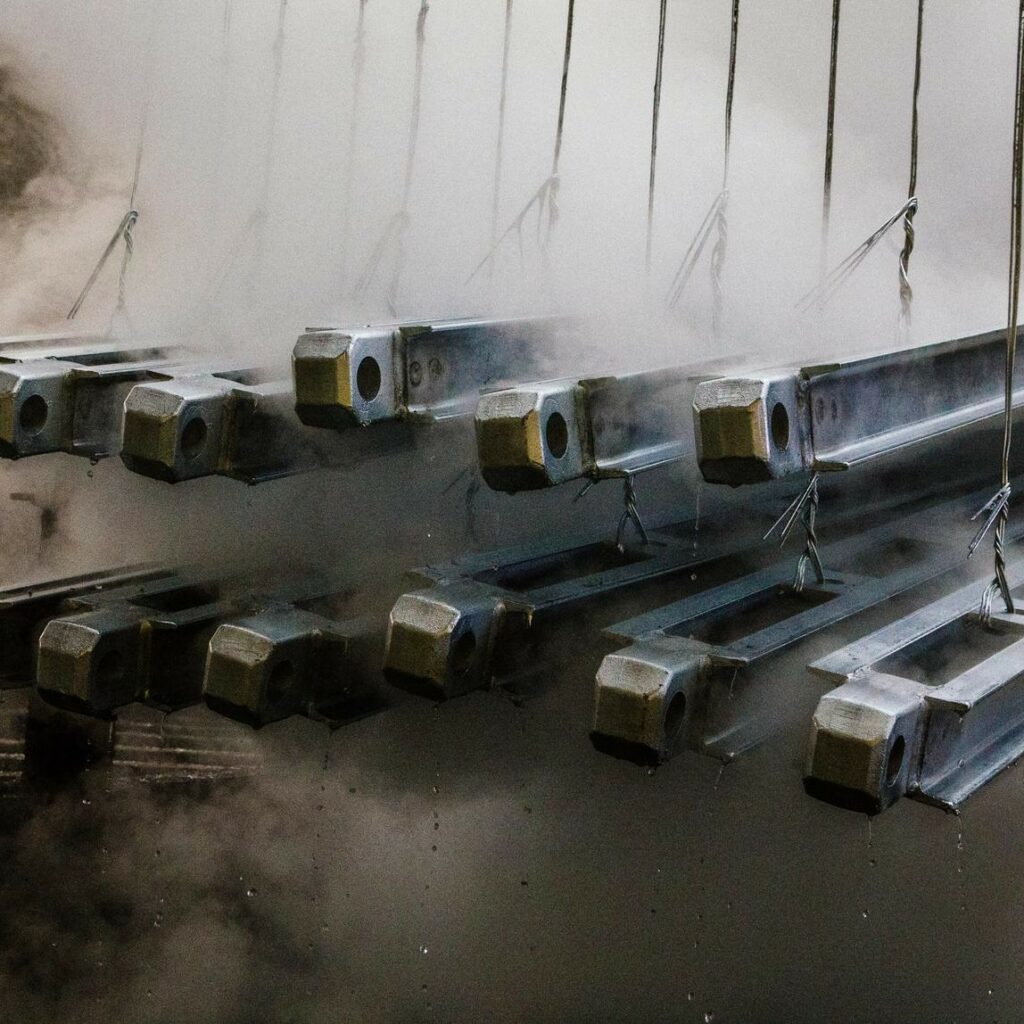4 Methods of Galvanization
1. HOT DIP GALVANIZING
the most popular and method of galvanization is hot-dip galvanizing (HDG). In HDG, steel structures are immersed in molten zinc. This allows for the zinc to cover all nooks and crannies of the steel. Areas like edges, seals, corners, and seams are provided complete protection. For this reason, larger steel items like plates or beams are most often associated with HDG. It offers the best zinc coating thickness proportional to the structure with not much room for error.
2. THERMAL SPRAY (OR METALLISING)
In this method, the steel is exposed to semi-molten zinc. It’s in the form of a powder or wire that is heated by plasma heat or a flame to activate it. In comparison to HDG, the zinc is not immersed in the thermal spraying method; however, the steel requires more preparation for the application of zinc.
If a steel structure is to undergo thermal spraying it must be sandblasted manually or by machinery. If the steel is not prepared properly, it is more susceptible to errors. Overall, if you are looking towards thermal spraying, remember that is usually is the most expensive process due to the thicker zinc coatings but can have your steel be protected the longest.
3. ELECTROPLATING
If you’re on a budget, electroplating is your best option. Optimal for smaller steel components such as fasteners with fine threads, the application of zinc tends to be light as it provides minimal protection. That being the case, it is not recommended to put any steel that undergoes this process outdoors or where it will be exposed to a high corrosion area. Another method, named mechanical plating, is similar to electroplating. This method is an “electroless” plating method using mechanical energy and heat. It provides similar results in terms of zinc coating thickness and resistance against corrosion. So if you ever go to get your steel galvanized, know that electroplating and mechanical plating are one and the same for similar results.
4. ZINC RICH PAINTS
If you’re in a time crunch, zinc-rich paints may be your best option. Painting on zinc is ideal for on-the-job galvanization or patching up existing steel. It’s popular for repair jobs on damaged or worn galvanized coatings. It’s a quick and comparatively inexpensive solution to providing protection against corrosion. While zinc-rich paints are ideal for smaller-sized projects, they can be applied to any sized surface. It will just need to be prepared properly by sandblasting the area that will be painted to its bare steel. The paint can be applied by brush or spray – both effective methods.
In short, the thickness of the zinc coating is proportional to the durability of the steel against corrosion. However, the thickness of the coating is also proportional to the cost. Now that you know some of the most popular galvanization processes, look at your next project and the steel you will utilize to determine what best fits your budget and your needs.
